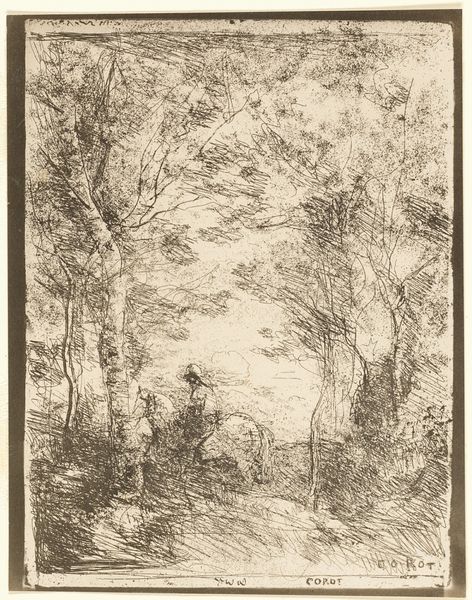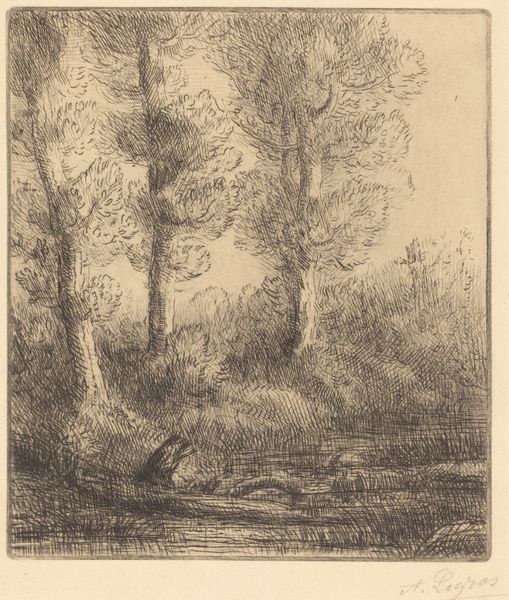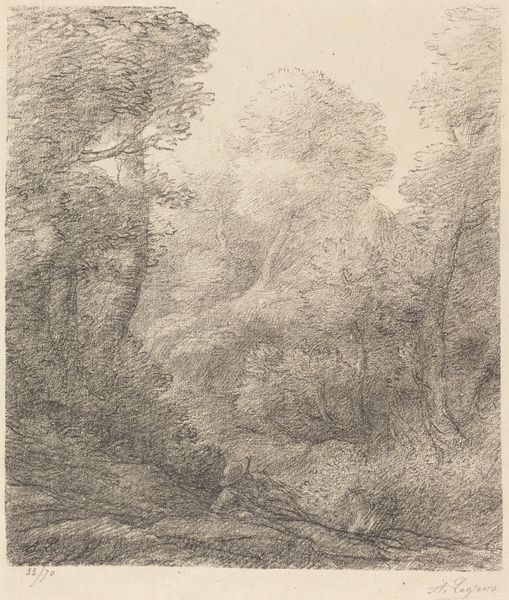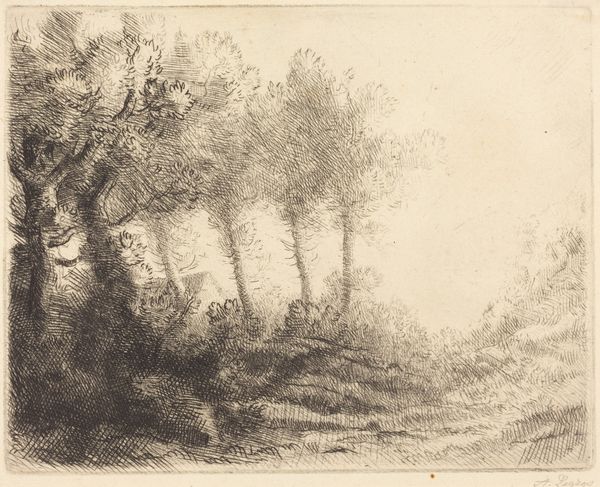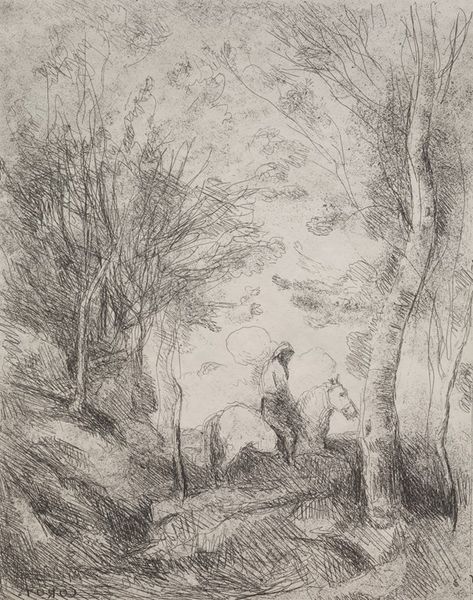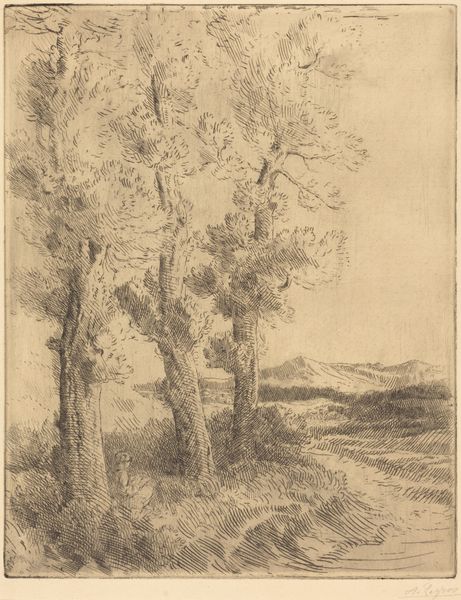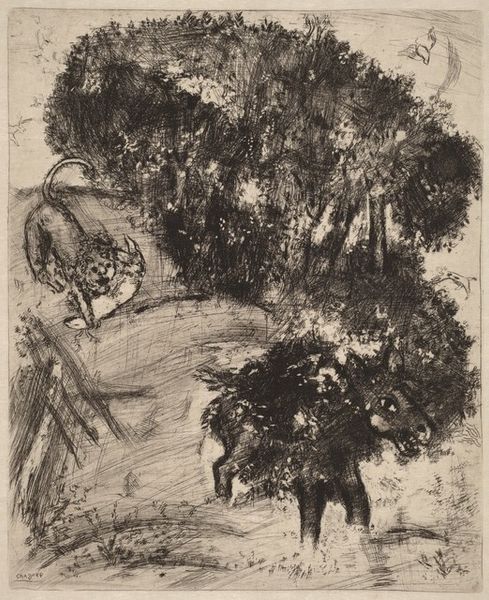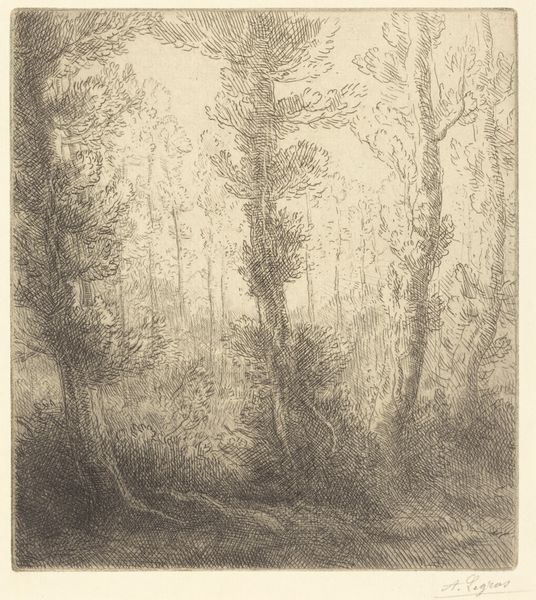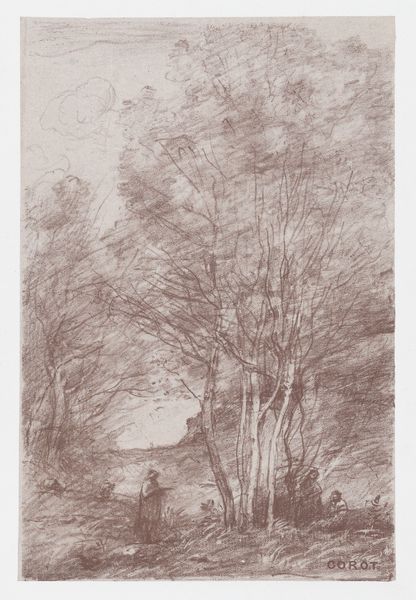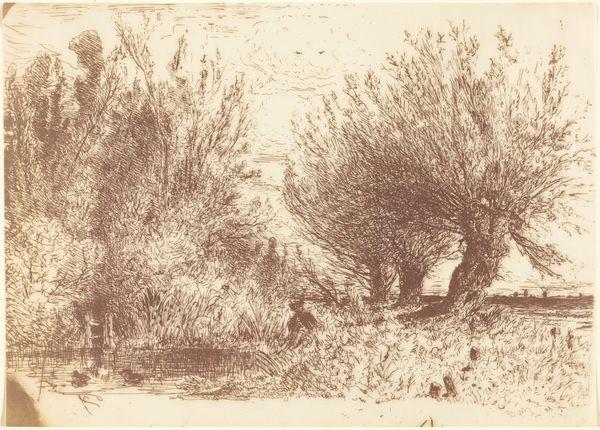
Copyright: Public Domain: Artvee
Camille Corot made this etching, “The Gardens of Horace,” using a copper plate and etching needles. The etching process involves covering a metal plate with a waxy, acid-resistant ground. The artist then scratches an image into the ground, exposing the metal. When the plate is dipped in acid, the exposed lines are etched, creating grooves that hold ink. The plate is then cleaned, inked, and pressed onto paper, transferring the image. Here, Corot's marks vary in direction, depth, and density, creating a rich range of values and textures. In the 19th century, artists like Corot embraced printmaking, which allowed for wider distribution of their work, creating a market for accessible art. The relatively low cost and reproducibility of prints democratized art ownership, making it available to a broader audience. The lines of the image allow for a sense of the immediacy of the artist's hand, while also showing the subtle effects of a chemical process. Thinking about materials and making helps us to understand the full meaning of the artwork, challenging traditional distinctions between fine art and craft.
Comments
No comments
Be the first to comment and join the conversation on the ultimate creative platform.
